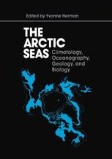Search
Search Results
-
Continental Configurations and Mantle Reference Frames over Geological Time
The map** of magnetic anomalies generated by ocean crustal spreading and the sampling of this crust by deep drilling have produced a detailed...
-
Sedimentation and plate tectonics
Until the 1960s sedimentary basins were explained and categorized in terms of geosynclinal theory (Dott, 1974, 1978; Mitchell and Reading, 1978)....
-
Primary Data
The search and selection of suitable regions, sites, species, and trees are fundamentally important in dendrochronological studies. Practically every...
-
Permian-Triassic of the Tethys: Carbon isotope studies
Profiles of carbon isotopes were studied in marine limestones of Late Permian and Early Triassic age of the Tethyan region from 20 sections in...
-
Late Neogene Arctic Paleoceanography: Micropaleontology, Stable Isotopes, and Chronology
The climatic history of the Arctic has been a matter of debate ever since the systematic sampling and study of seafloor sediments commenced several...
-
Traps of the Siberian Platform
The “traps” of the earth are one of the most common magmatic formations of ancient platforms. Compositionally they comprise basic rocks, and include...
-
Advantages and Limitations of Discovery Process Modeling: The Case of the Northern West Siberian Gas Plays
Discovery process modeling represents one of the most advanced tools available for hydrocarbon resource assessment of plays in semimature to mature...
-
Continental Flood Basalts and MORB: A Brief Discussion of Similarities and Differences in their Petrogenesis
Basaltic rocks almost certainly constitute the most common surface material among the terrestrial planets. On the earth, basalts erupt in a variety...
-
Frontiers in Hydrocarbon Exploration
Although this symposium pertains to observation through drilling of the continental crust, I was asked by the planners of this meeting to present a...
-
Hazards of Floods and Droughts in India
India is a land of monsoons of which the South-West Monsoon is a wet monsoon while the North-East Monsoon is a dry one. Yet the rainfall produced by...
-
Modern volcanoes and volcanic centres
This subject warrants much fuller attention than we are able to give within the scope of this book. We therefore document the important physical and...
-
Implications
The Earth is often regarded as a heat engine because many of the important phenomena of the Earth are caused by its internal thermal energy. The...
-
The Absaroka Sequence: Lower Pennsylvanian—Lower Jurassic
The Absaroka Sequence was deposited through the longest of Phanerozoic geological intervals to be considered in this book. It took more than three...
-
Peridotitic Komatiites and the Origin of Ores (Southeastern Part of the Baltic Shield)
Komatiite magmatism of the Archean greenstone belts of the southeastern part of the Baltic shield is considered here. The conformable bedding and...
-
Geophysical and Geochemical Signatures and Plate Tectonics
This chapter is essentially a continuation of the preceding chapter, and the introduction of that chapter serves also as an introduction to this...
-
Metal Deposits Associated with the Early Stages of Continental Rifting
As we have seen in previous chapters, rifting activity in oceanic and arc environments can be associated with the generation of certain types of...
-
Intracontinental Hotspots, Anorogenic Magmatism, and Associated Metal Deposits
It is probably safe to say that the tectonics of plate interiors (see Geodynamics Series Volume 1, 1980, Am. Geophys. Union) are less well understood...
-
The Distribution of World Oil and Gas Reserves and Geological—Geochemical Implications
The observed distribution of known reserves of oil and gas has been studied by exploration geologists and also by petroleum economists. The former...
-
Sedimentation and plate tectonics
Until the nineteen sixties sedimentary basins were explained and categorized in terms of geosynclinal theory (Dott, 1974, 1978; Mitchell and Reading,...
-
The Eocambrian (Vendian sensu stricto)
Different geologic formations that originated after the Katangan orogeny are here attributed to the Eocambrian, the time of their formation being...
